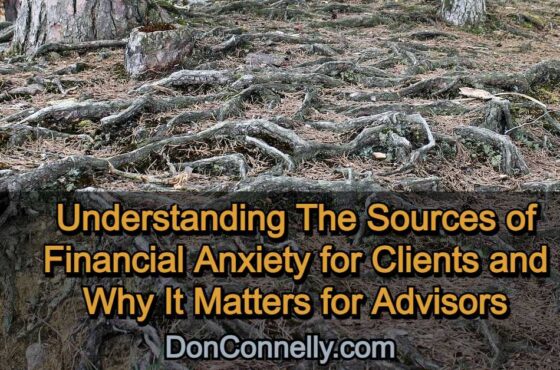Decoding Doubt: 6 Non-Verbal Cues Clients Might Be Giving You That Signal a Trust Deficit
 Trust is the bedrock of any successful financial advisor-client relationship. But how do you know if a client truly trusts you, especially when they might not explicitly say it?
Trust is the bedrock of any successful financial advisor-client relationship. But how do you know if a client truly trusts you, especially when they might not explicitly say it?
Beyond the spoken word, clients often communicate their feelings through non-verbal cues. Learning to recognize these subtle signals can help advisors address underlying concerns and build stronger, more trusting relationships.
Broken trust: When Financial Advisors lose clients
Financial advisors hold a position of immense trust, managing people’s financial security. However, certain behaviors can erode that trust, leading clients to question their advisor’s motives and competence. Here are some red flags for clients:
#1. Lack of transparency
Clients deserve clear explanations of investment products, fees, and potential risks. Opaque jargon, downplaying risks, or omitting critical information can leave clients feeling misled.
#2. Jargon and technical language
Using excessive jargon or overly technical language can create a communication barrier. Clients might feel intimidated or disengaged if they struggle to understand your explanations.
#3. Dominating the conversation
Talking excessively without allowing the client to voice their concerns can lead to feeling unheard or undervalued. Practice active listening and encourage open communication to build trust and rapport.
#4. Lack of empathy
Failing to acknowledge the client’s emotions or concerns can create a gap in the relationship.
#5. Unrealistic promises
Guaranteeing returns or minimizing risks is a recipe for disappointment. Ethical advisors acknowledge market fluctuations and focus on long-term strategies.
These behaviors can damage trust, making clients doubt their advisor’s expertise and intentions. Financial advisors can build strong, trusting relationships by fostering transparency, open communication, and prioritizing client needs.
Behind the words: Non-verbal cues of client distrust
#1. Physical barriers
Our bodies often subconsciously communicate our level of comfort. Clients who don’t trust you might create physical barriers between themselves and you. This could manifest as crossed arms, leaning back in their chair, or placing objects like briefcases or folders on the table between as a physical barrier. These actions create a sense of separation and can indicate a desire for distance.
Advisor Tip: Subtly mirroring your client’s posture can create a sense of comfort and rapport. You can also lean slightly towards the client to demonstrate attentiveness and interest without appearing aggressive.
#2. Limited eye contact
Eye contact is essential for building rapport and establishing trust. A client who avoids eye contact or makes fleeting glances might be uncomfortable or unsure of your intentions. While cultural norms can influence eye contact, a consistent lack of it during your interaction can be a red flag.
Advisor Tip: Try maintaining eye contact throughout the conversation, but avoid staring, which can feel intimidating.
#3. Short, closed-off responses
Pay attention to how clients respond to your questions and explanations. Short, clipped answers or one-word replies might suggest a lack of engagement or interest. Clients who trust you are more likely to ask clarifying questions, offer their own thoughts, and participate actively in the conversation.
Advisor Tip: Asking direct, open-ended questions encourages eye contact and facilitates deeper conversation.
#4. Mirroring and mimicry
Mirroring, or subconsciously mimicking a person’s body language or speech patterns, can indicate rapport and trust. However, a complete lack of mirroring can also be telling. If a client doesn’t seem to respond to your open posture or calm tone, it might reflect their hesitation to connect with you.
Advisor Tip: If you suspect negative mirroring, subtly adjust your body language to a more neutral position. Then, focus on building rapport by actively listening and demonstrating genuine interest in their concerns.
#5. Nervous habits
Increased fidgeting, drumming fingers, or playing with objects can be signs of nervousness or anxiety. While not a definitive indicator of distrust, these nervous habits might suggest the client feels uncomfortable or unsure in your presence.
Advisor Tip: Creating a calm, welcoming environment can help ease client anxieties. If you notice your client displaying nervous habits, express understanding and offer a reassuring smile or comment.
#6. Inconsistent facial expressions
Facial expressions are powerful tools for nonverbal communication. Clients who don’t trust you might display forced smiles, frowns, or furrowed brows that don’t align with the conversation’s tone. Incongruent facial expressions can indicate skepticism or doubt about your words or intentions.
Bottom Line
Building trust takes time and consistent effort. By understanding nonverbal cues and actively fostering trust-building behaviors, you can strengthen client relationships and establish yourself as a reliable advisor. Remember, trust is a two-way street. By demonstrating your own trustworthiness and commitment to their success, you can create a foundation for a long-lasting and productive client partnership.
Watch this 3-minute video to learn how our 24-step training program can help you develop and hone the soft skills you need to succeed in our business.
See program details and enroll today!
Available as a self-paced program (always open) or as a 12-week coaching program (open only a couple of times a year), this training will change the way you view your practice and will give you an enormous advantage over your competition. Select your format and enroll now!



